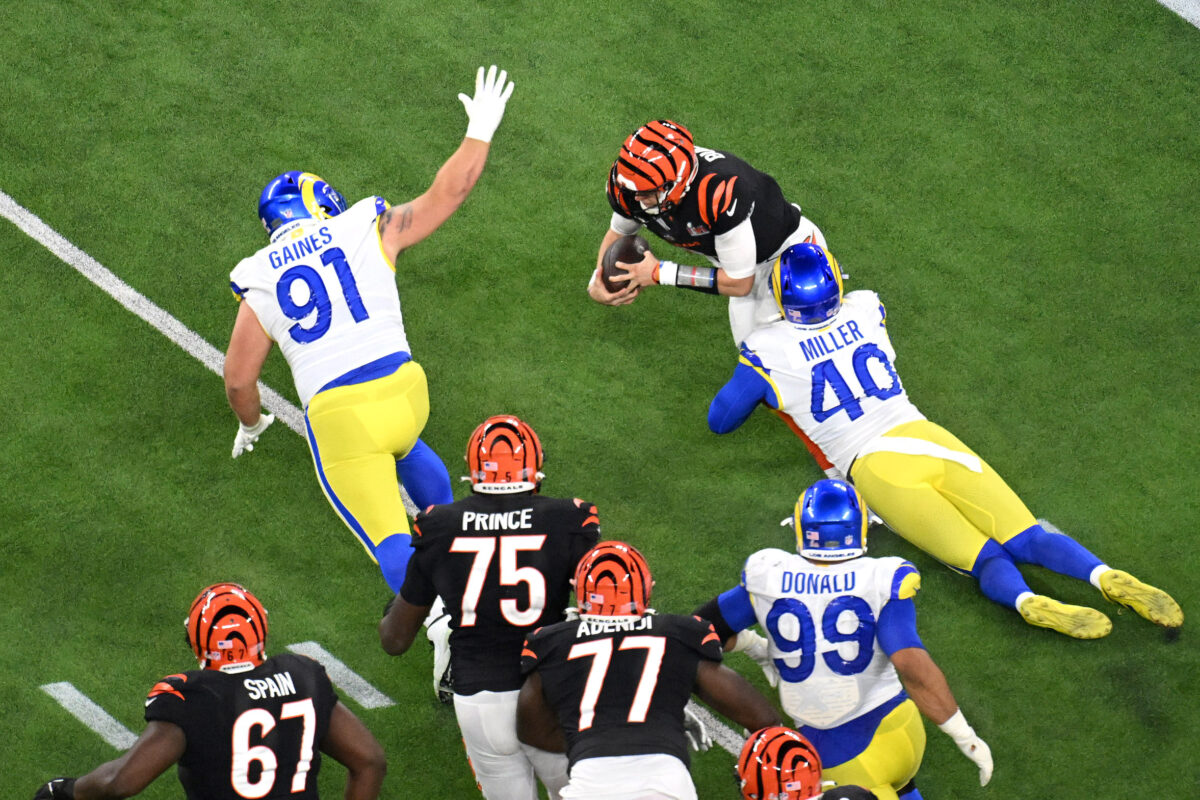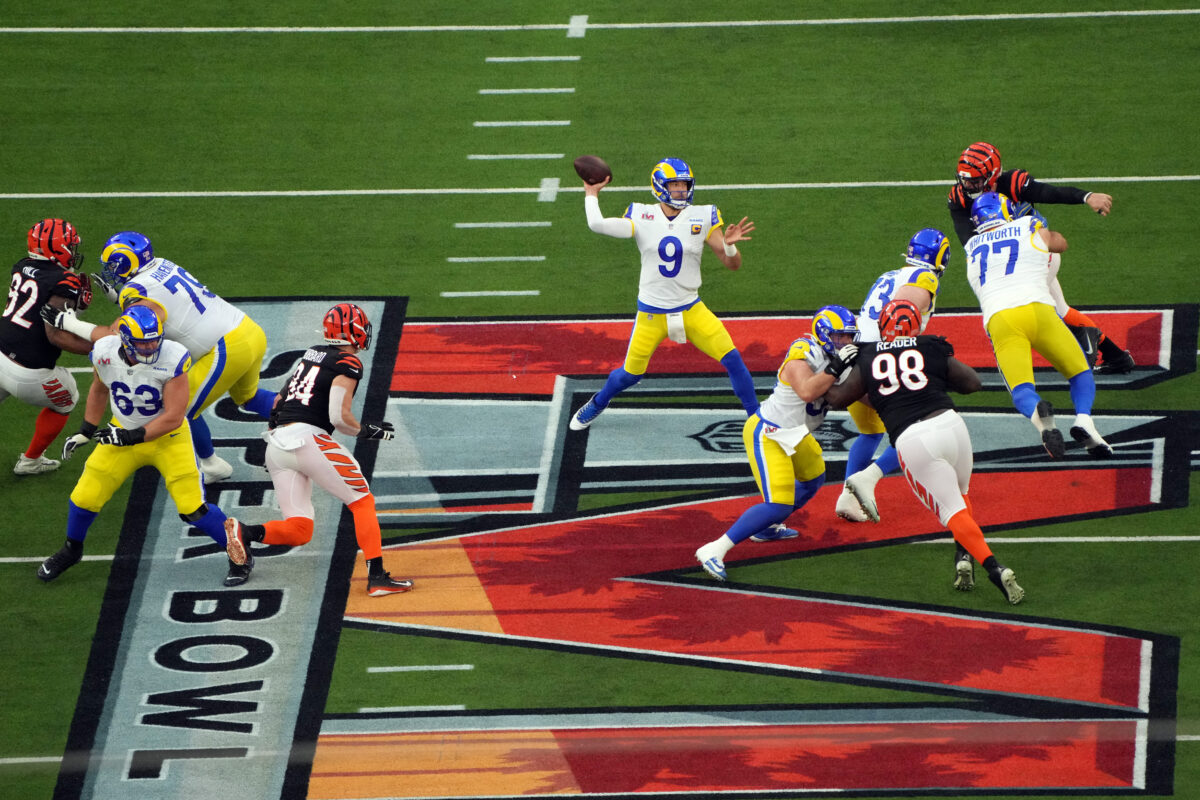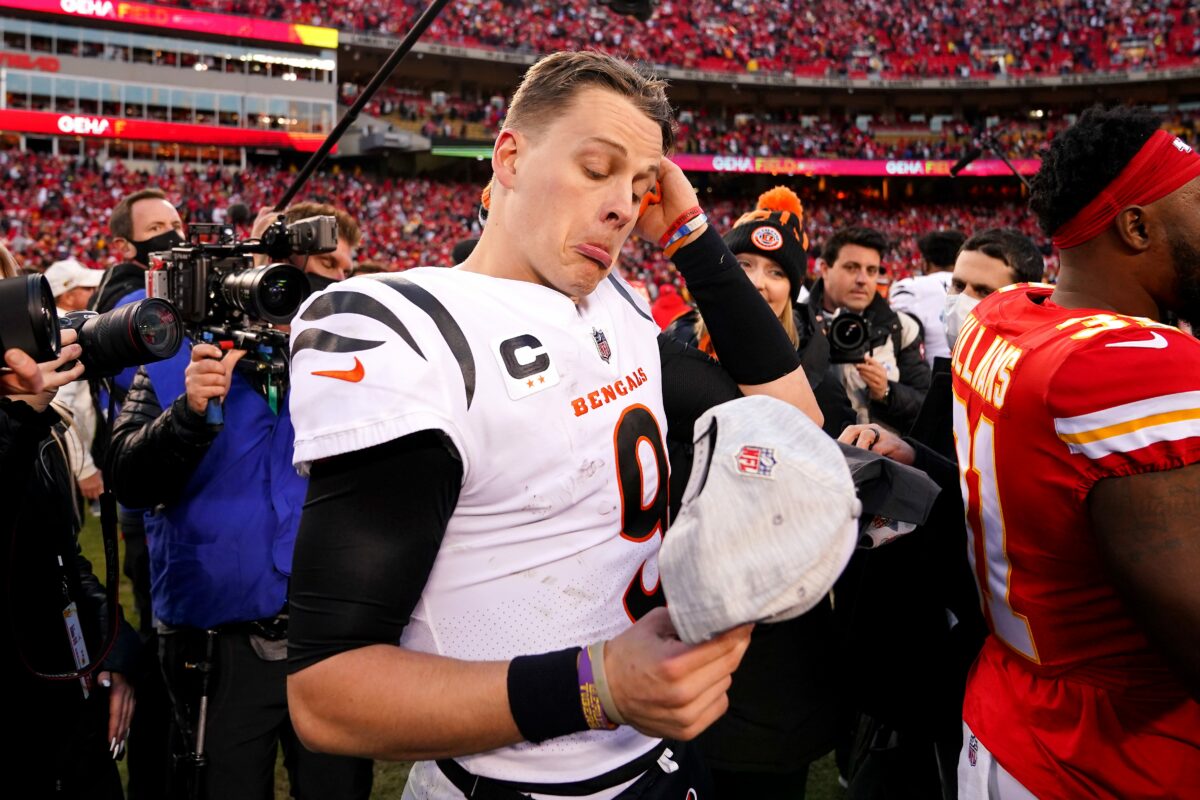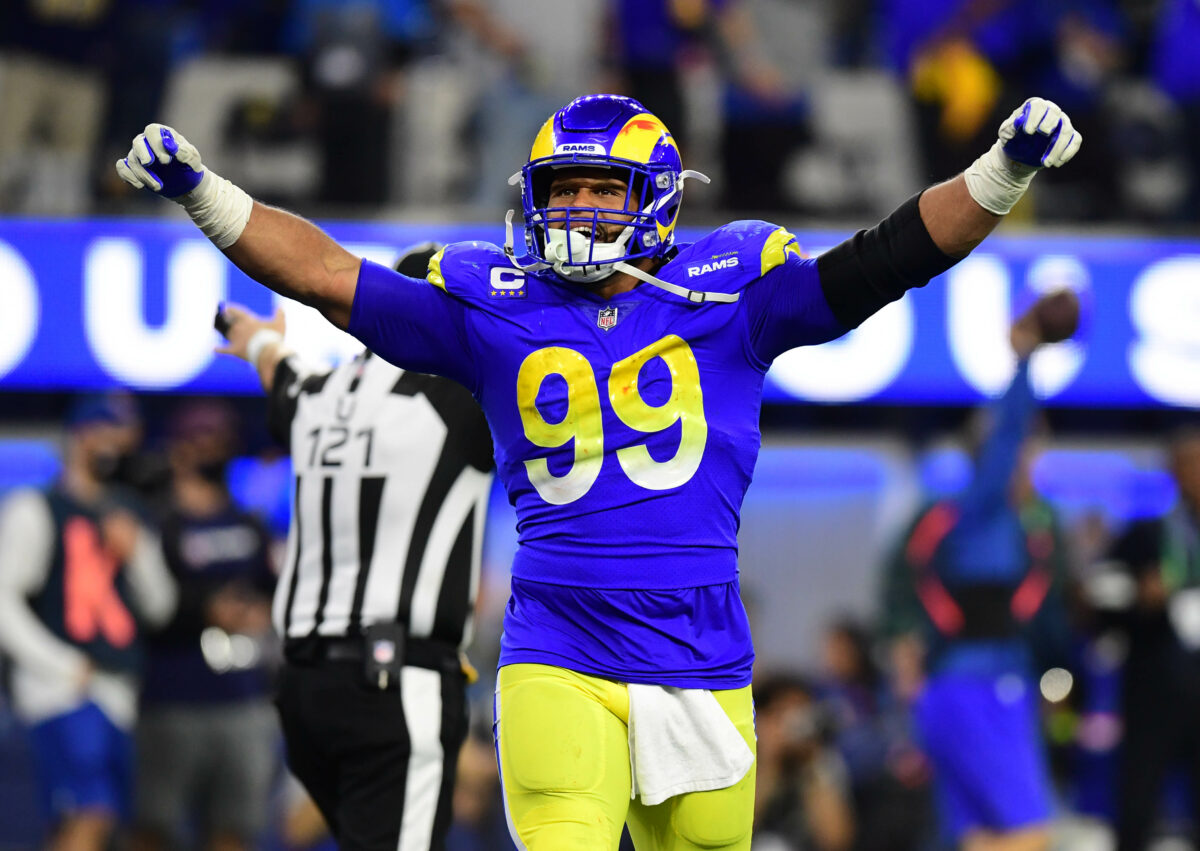In the days leading up to Super Bowl LVI, much of the attention focused on how Joe Burrow and the Cincinnati Bengals were going to handle the imposing defensive front from the Los Angeles Rams. With Von Miller, Aaron Donald and Leonard Floyd at their disposal, there were concerns that an offensive line that had to pick Burrow up after nine sacks in the Divisional Round might be overmatched in the Super Bowl.
Flying under the radar a bit, however, was defensive tackle Greg Gaines. Our own Doug Farrar highlighted Gaines as one of the secret superstars of Super Bowl LVI prior to the game, and that premonition paid off in a large way for the Rams on Sunday night.
Gaines was in on 55 of the Rams’ defensive snaps Sunday night, or 90% of their defensive plays. He notched three assisted tackles over those snaps, but showed up in a big way early and often, and also had a hand in one of the biggest plays of the game from the Rams’ perspective.
Gaines got involved early in Super Bowl LVI. On the Bengals’ first rushing attempt of the game, it was the defensive tackle who got to Joe Mixon, holding him to a minimal gain:
Gaines aligns on the left shoulder of the center, as as the Bengals try and run Mixon inside on a zone design, Gaines mirrors the movement of the center as Trey Hopkins slides to his right. Gaines is able to peek into the backfield and read Mixon’s path, disengaging from Hopkins and getting to the running back for the stop.
Cincinnati would eventually go for it on fourth down, and the Rams would get the first big defensive play of the game as Burrow’s pass fell to the SoFi stadium turf incomplete.
Just prior to halftime Leonard Floyd managed to get to Burrow for one of the Rams’ seven sacks of the Super Bowl, but it was a loop from Gaines that created the opportunity:
This play was one of the many creative defensive fronts that Raheem Morris rolled out for Super Bowl LVI. On this play, Miller is the only defender aligned on the right side of the offensive line, in a wide-9 alignment well outside right tackle Isaiah Prince. Gaines is on the left shoulder of Hopkins, while both Donald and Floyd align on the outside of left tackle Jonah Williams.
At the snap, both Floyd and Donald crash to the inside while Gaines loops behind them to the edge. Initially, Burrow feels comfortable in the pocket. but then he sees a flash of white coming off the left edge in the form of Gaines. That causes the quarterback to try and slide up towards the line of scrimmage, taking him right into the path of Floyd crashing down to the inside for an eight-yard loss.
Another stunt involving Gaines opened up an opportunity for Miller to get home late in the third quarter. With the Bengals facing a 2nd and 12 on their own 14-yard line, Gaines and Miller combined on a tackle/end stunt off the right side of the offensive line. Gaines took an upfield path while Miller, aligned outside of the defensive tackle, looped behind him. Watch as Gaines occupies both the guard and the tackle, clearing a path for Miller as the pass rusher slices inside:
But perhaps Gaines’ biggest contribution came in the closing seconds. After the Rams scored to take the lead, Burrow and the Bengals looked to have a little drive going. After Burrow connected with Ja’Marr Chase for 17 yards to give Cincinnati a 1st and 10 at their own 42-yard line, Burrow found Tyler Boyd for nine yards, getting Cincinnati into Rams’ territory.
A second down passing attempt in the general direction of Chase drifted out of bounds, setting up a 3rd and 1 for the Bengals at the Rams’ 49-yard line. Realistically, the Bengals needed just a few more yards to get into field goal range for rookie kicker Evan McPherson, based on his performance pre-game. McPherson missed from 60- and 62-yards out, but converted a 56-yard attempt according to Nicki Jhabvala of the Washington Post:
Bengals K Evan McPherson just hit the crossbar on a 60-yard FG attempt. pic.twitter.com/A4heCkesYR
— Nicki Jhabvala (@NickiJhabvala) February 13, 2022
On that 3rd and 1 play, Zac Taylor again turned to the run game, sending Samaje Perine on an inside run. Gaines, however, would change his path in the backfield, and perhaps change the course of Super Bowl LVI:
Gaines aligns across from left guard Quinton Spain, and as the guard steps to the inside off the snap, Gaines matches his movement with a quick lateral step of his own. Perine is aiming for the inside, but as Gaines matches the lateral movement of Spain, he manages to dip his head and shoulder back to the inside, across Spain’s left shoulder:

As Gaines is doing this, linebacker Ernest Jones has crossed the face of the left tackle. This combination, of Gaines and Jones both dipping into the same gap, forces Perine to try and bounce the run to the right side where waiting for him is Donald.
As Perine bounces, he cannot get to the outside of Donald, and is forced to stay inside of the imposing defensive tackle. That is when Gaines scrapes back across Spain and gets to the running back, stopping him for no gain and setting up the climatic fourth-down attempt:

As the saying goes, football is a team game. It takes all 11 players on the field for a giving play for one team to be successful. On Sunday night, Gaines lived up to his secret superstar billing, creating opportunities for his teammates and perhaps even changing the course of Super Bowl LVI.








